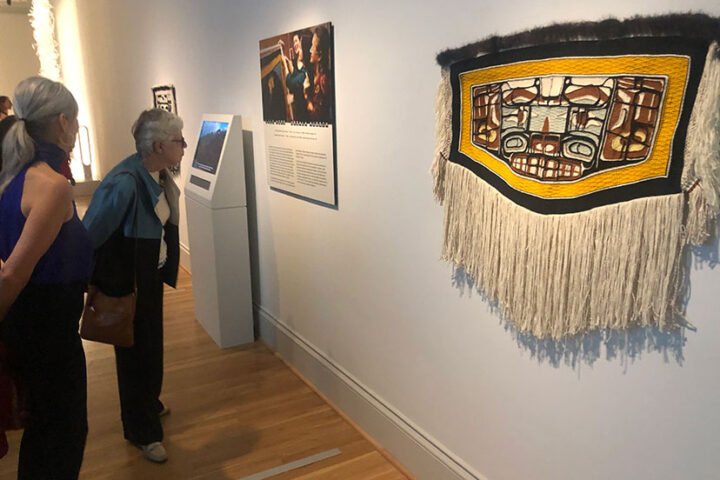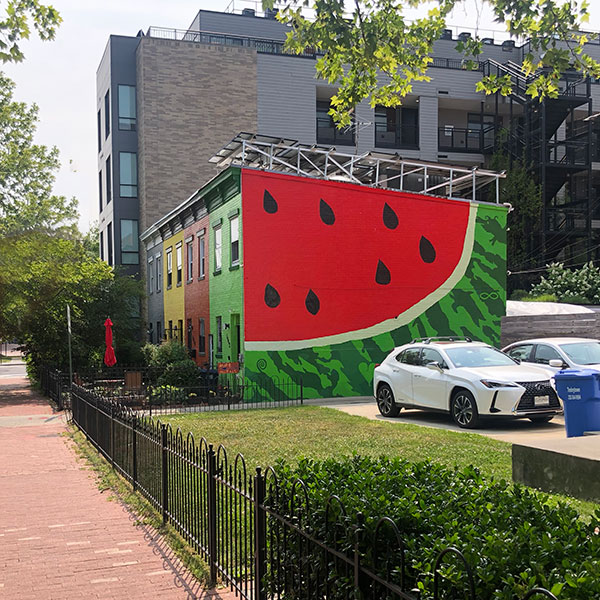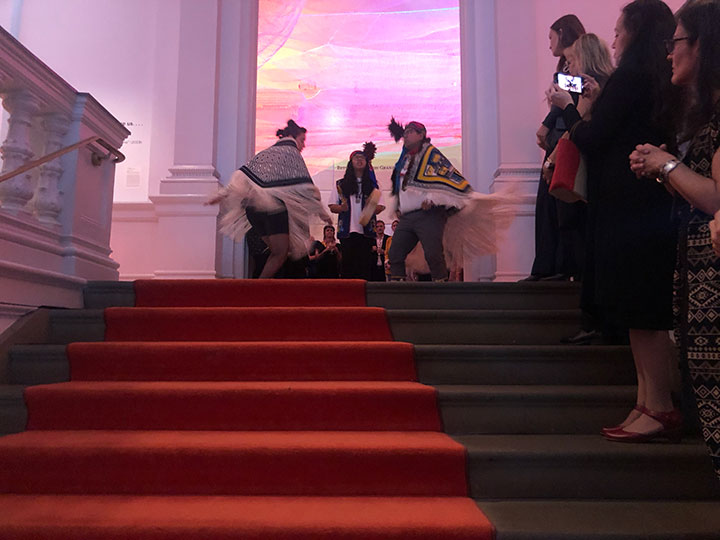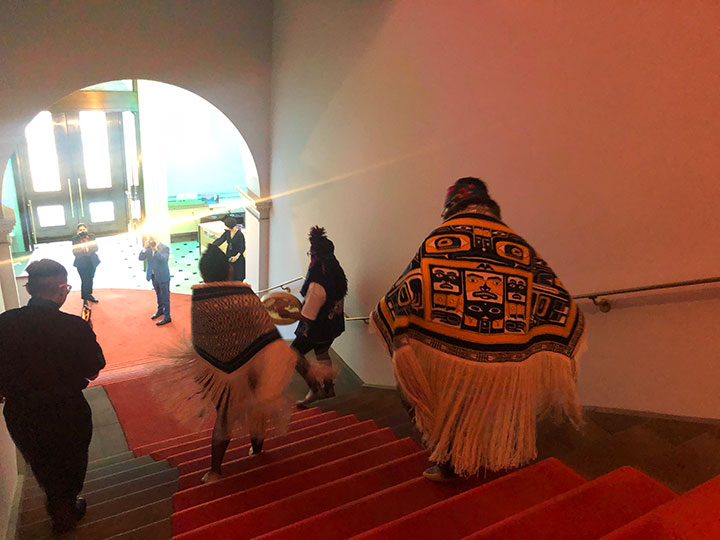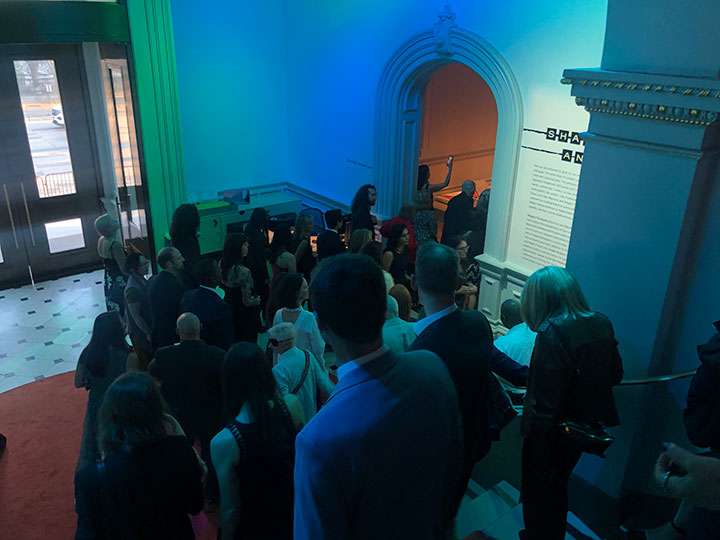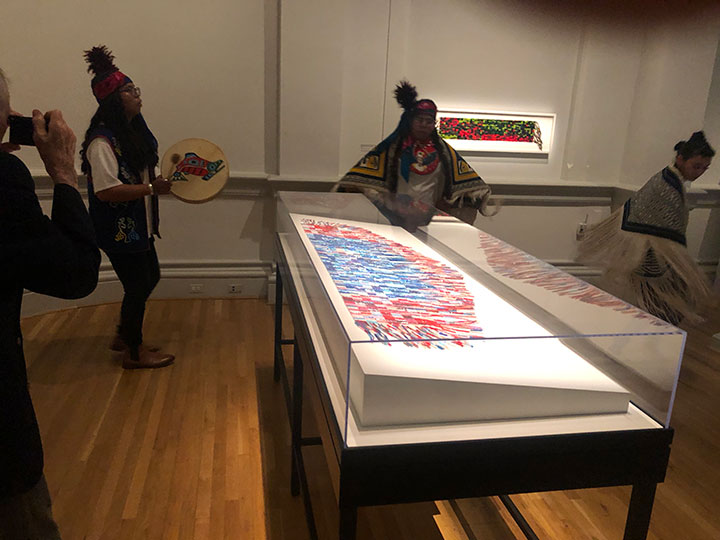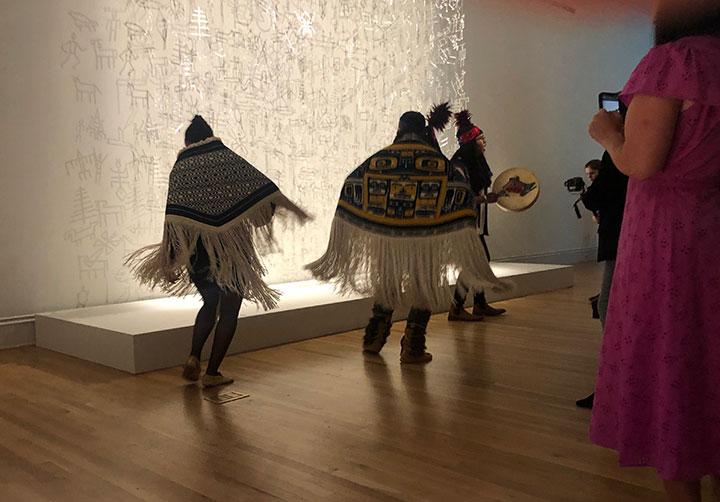PHOTO: From left, Ursala Hudson, Lily Hope, Clarissa Rizal, weaving the ‘side braids’ for Clarissa’s “Egyptian Thunderbird” Chilkat robe, June 2016.
In Part One, I shared a few photos of the buildings I passed on my walk through downtown Washington DC on May 24, the day before the opening of the “Sharing Honors and Burdens” exhibit — a showing of contemporary art by six American Indian artists, two of whom were my daughters, Lily Hope and Ursala Hudson.
Weavings by Lily and Ursala would be among the artwork featured the following day (May 25) at the opening reception at the Renwick Gallery, located a block west of the White House.
I also mentioned that Lily and Ursala had learned a particular style of weaving from their mother, Clarissa Rizal, who was herself a fairly renowned weaver and weaving teacher. That weaving style is known as ‘Chilkat weaving’ because it was perfected mainly by the women of the Chilkat tribe of Tlingit Indians in southeast Alaska. Not only was Clarissa well-versed in the techniques; she was also willing to use those techniques in innovative (and sometimes surprising) ways. Lily and Ursala followed in her footsteps.
Clarissa passed away in 2016. So she was a big part of the “Honoring”, in the case of her two daughters.
More about the Renwick’s opening reception, in a moment.
As I took my walking tour of downtown Washington… appreciating the architecture and the movement of pedestrians and vehicles in a large city… I came across a number of monumental bronze statues, and nearly all of the statues, it seemed, celebrated military leaders from various wars. Men, victorious in conflict.
Most of the military heroes were fully clothed. But not all.
I don’t recall coming across a single statue that celebrated a famous woman.
But women did appear, occasionally, in supporting roles. The statute of Samuel Gompers, for example, included a mother holding a baby, and two other women, standing behind their men.
Samuel Gompers is not exactly a household name these days, in the same sense as some of his contemporaries — the industrialists and financiers like Henry Ford, Andrew Carnegie, John D. Rockefeller, Cornelius Vanderbilt, J.P. Morgan, George Pullman…
But Gompers played a significant role in the development of American culture, most notably by helping found the American Federation of Labor (AFL) in 1886 and serving as its president until his death in 1924.
Unfortunately for the development of American culture, Gompers was not only a peerless organizer; he was also, based on what I’ve read, a racist.
To provide a balance, so to speak, with the military and political personalities cast in bronze, the ordinary people of Washington DC also had their own ideas about the type of culture we want to live in, and painted them as murals on the sides of buildings. Not necessarily celebrating war.
While I was on my walking tour of the city, Ursala and Lily were meeting with the staff of the Renwick Gallery, preparing for the May 25 opening reception for the ‘Sharing Honors and Burdens” art exhibit. The reception would involve many of the wealthy donors who support the Renwick Gallery and its efforts to promote a wide variety of American cultural insights, as embodied in the visual arts.
Up in Alaska, Tlingit Indian women have something of a reputation for assertiveness, and I can vouch for that tendency, after 32 years of marriage to Clarissa, and after spending time around Clarissa’s family and friends.
Lily and Ursala apparently inherited some of those tendencies. I consider that a positive thing.
The Renwick Gallery staff had been preparing for this exhibit for a couple of years, and one of the questions they had for Lily and Ursala concerned the ceremonies typically connected to Chilkat weaving and use. Among the Tlingit Indians, Chilkat robes and regalia are never “on display” unless they are being worn by someone. Normally, a Chilkat robe is hidden away in a box until it comes out for ceremonial use. So what was happening at the Renwick — displaying the robes and regalia on mannequins — is at odds, culturally, with traditional practices.
Another thing. When a Chilkat robe is completed (they often take up to a year to weave, due to the intricate weaving technique) it’s traditional to have the robe ‘danced’ in a special public ceremony, as a way of honoring the robe, its weaver and its new owner. So Lily and Ursala had suggested to the Renwick staff that two of the robes could be ‘danced’ at the reception, as a way to bring the spirit of the ancestors into the gallery. The Renwick agreed with that idea, and flew in two Tlingit dancers and a Tlingit song leader from Alaska.
Lily and Ursala introduced the dancing event at the reception, and then the crowd followed the dancers from the auditorium, down the stairs and through the exhibit.
Following the dance, the reception guests had a chance to meet and talk with the six featured artists, with a separate gallery space dedicated to each artist’s work.
One of the gallery spaces was shared by Lily and Ursala.
I will share a few concluding thoughts about the trip to Washington DC in Part Three.


